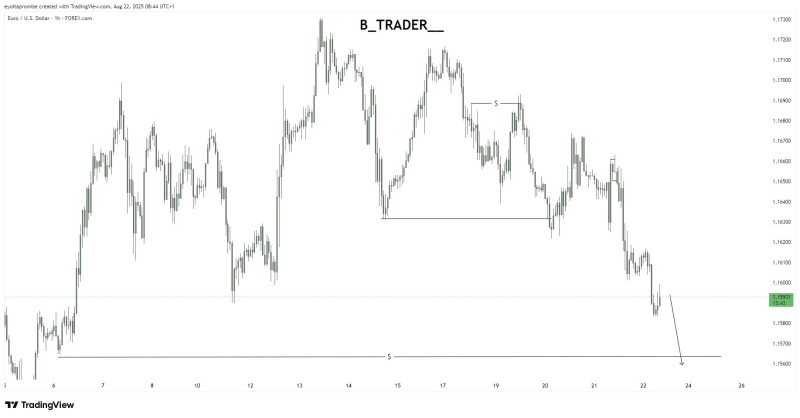The euro is having a rough time against the dollar, and things might get worse before they get better. After tumbling from the 1.1720 highs, EUR/USD is now sitting precariously around 1.1593, with traders eyeing the exit doors. Technical charts are flashing warning signs, and the next stop could be an uncomfortable ride down to 1.1560.
What makes this selloff particularly concerning is how cleanly the pair has sliced through support levels that were supposed to hold. When markets move this decisively, it usually means the underlying forces are stronger than most people anticipated.
EUR/USD Price Action Signals More Downside
The writing's been on the wall since EUR/USD started its descent from 1.1720. Each bounce has been weaker than the last, and buyers seem to have thrown in the towel around the 1.1640 area. Now we're seeing what happens when technical support crumbles - it's not pretty.
Market analyst B_Trader summed it up perfectly in a recent note: "Obvious next target in price. If you are buying, you will get what you are looking for 🛌." Translation? Don't try catching this falling knife just yet.
The hourly charts tell the story clearly - every attempt at a recovery gets sold into, and the path of least resistance is pointing straight down toward 1.1560.

Key Technical Levels for EUR/USD (EURUSD) Price
Here's where things get interesting from a technical standpoint. The 1.1640 level that everyone was watching? It's gone. What used to be support is now acting like a brick wall for any recovery attempts.
Looking ahead, resistance has firmed up around 1.1660-1.1680. That's a pretty wide band, which tells you just how skeptical traders are about any bounce. On the downside, 1.1560 is the obvious next target, but if that breaks, we could be looking at 1.1500 pretty quickly.
The momentum indicators aren't doing the euro any favors either. RSI readings are looking weak, and there's just not much buying interest showing up anywhere.
Macro Context Behind EUR/USD Price Moves
It's not just about charts and technical levels - there are some real fundamental headwinds hitting the euro right now. The big elephant in the room is Jerome Powell's upcoming Jackson Hole speech. Markets are still trying to figure out what the Fed's next move will be, and that uncertainty is keeping the dollar strong.
Meanwhile, Europe's growth story isn't exactly inspiring confidence. The Eurozone is still struggling with sluggish economic data, and the policy gap between the U.S. and Europe keeps widening. When you combine dollar strength with euro weakness, you get exactly what we're seeing now.
 Peter Smith
Peter Smith

 Peter Smith
Peter Smith


